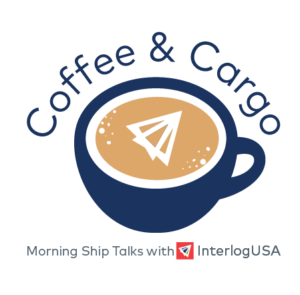Competitive Edge
Headlines
- Global vessel schedule reliability improved for the third consecutive month in July to 40.5 percent, although the gain was a marginal half a percentage point.
- Last week, the Port of Long Beach’s new cable-stayed bridge was officially named the Long Beach International Gateway Bridge after receiving approval from the Californian state senate.
UPDATE: U.S./Canada Ports – Number of Vessels at Anchor as of 08-30-22
- Savannah: 41 Vessels at Anchor (-2)
- Houston: 39 Vessels at Anchor (+13)
- Vancouver: 30 Vessels at Anchor (+2)
- New York/Newark: 19 Vessels at Anchor (+5)
- San Francisco/Oakland: 11 Vessels at Anchor (0)
- Los Angeles/Long Beach: 9 Vessels at Anchor (+1)
- Charleston: 1 Vessels at Anchor (+1)
Note: This count does not include vessels moored and being unloaded at port docks. Colored numbers in parentheses represents the change from last week over.
Courtesy: MarineTraffic
IMPORT: Asia to North America (TPEB)
Recent Developments:
- While rates continue a downward trend, U.S. port congestion and intermodal delays remain heavy players to unreliable scheduling.
- For July, schedule reliability for the TPEB lane was mixed, reports indicate. On-time performance from Asia to the West Coast improved while Asia to the East Coast slipped.
- Contract negotiations between the International Longshore and Warehouse Union (ILWU) and Pacific Maritime Association (PMA) remain active. The existing labor contract between the two parties expired July 1.
- Both the ILWU and PMA have commented neither is planning on striking or shutting down operations amid ongoing talks. The two parties state their confidence that there will be no disruptions at USWC ports.
Rates: Spot rates from Asia to the U.S. coasts continue to decrease as demand from shippers has softened (in large part to over-ordering earlier in the year). The traditional cycle of peak season remains delayed as shipper demand and volumes continue trending downwards as well.
Space: Space is generally open at this time.
Capacity: Capacity has tightened in pockets. Shippers continue to divert cargo to the USEC due to fears of disruptions at West Coast ports from ongoing labor talks.
Equipment: Some inland terminals are reaching max capacity with inventory. Intermodal systems remain stressed with congestion and truck and chassis deficits.
- North American chassis manufacturers have ran into production delays in 2022 (for the second consecutive year), reports indicate. This stems from difficulties in sourcing raw components and retaining factory workers.
TIPS: Book at least 2-3 weeks prior to ready date. Strongly consider premium services and, if cargo is ready now, make plans to move as soon as possible with the current openings in space and fallen rates. When possible, shippers with fixed-rate contacts should take advantage of these softened rates on the floating market.
- Shippers should also reconsider averting West Coast routings. The “hot spots” for ship congestion and vessel wait times has shifted to the East Coast.
IMPORT: Europe to North America (TAWB)
Recent Developments:
- Northern European hubs remain critically congested. Labor-related tensions continue to pose disruptions to ports.
- The eight-day strike of some 1,900 workers at Britain’s Felixstowe Port concluded Sunday evening, August 28, with no agreement. The port employers’ recent offer was viewed by the representing union as “significantly below” its demands. The union, Unite, warns it would set further strike dates should the port not negotiate further.
- However, good news for German ports as port employers and the dockworker union have reached an agreement on wage increases. Around 12,000 employees at Germany’s North Sea ports will receive considerable increases in pay packages.
- USWC ports have seen alleviated congestion and improvements to vessel waiting times.
- On the USEC, both ports of New York/Newark and Savannah remain having a significant number of backlogged vessels at anchor off their respective shores.
- The Port of Houston, on the U.S. Gulf Coast, is also grappling with vessel congestion.
Rates: Rates remain elevated, but consistent, for the foreseeable future. Higher fuel costs are contributing to rate increases.
Space: Space remains critical to USEC routings. Meanwhile, there’s been slight openings in space for USWC direct routings.
Capacity: Capacity for both North Europe and Mediterranean services remain gripped.
Equipment: Equipment at European seaports is not as readily available as it has been for the past few months. Inland terminals in Europe are also still reporting equipment shortages. On the U.S. side, truck and chassis availability remain concerning, especially with the latter.
TIPS: Book 5 or more weeks prior to ready date. Shippers are strongly advised to use premium service for no-roll options and improved reliability for their cargo.
EXPORT: North America to Asia
Recent Developments:
- For the USEC, port congestion remains an issue for Savannah and New York/Newark.
- Diminished schedule integrity continues to challenge post earliest return dates.
- Vessel arrivals remain smooth for USWC POLs.
Rates: So far, no GRIs announced for September.
Capacity: Available capacity remains fluid for USWC POLs.
Equipment: Truck, container, and chassis availability remains dire and has significantly contributed to congestion of the intermodal system and IPI origins. Standard equipment at ports remains available unless carriers advise otherwise.
TIPS: Book 4 to 5 weeks prior to time of departure to secure necessary equipment and vessel space.
Three Railroad Unions and U.S. Freight Railroads Have Reached an Agreement on a New Contract
Right now, three unions and U.S. freight railroads reached agreement towards a new contract, which is good news. However, nine other unions have yet to reach an agreement.
If no agreement is reached by September 16th, the unions would legally be able to stage a work stoppage or strike.
Source: Freightwaves
Freight News
Severe drought and power outages have been occurring in parts of China
Central and western parts of China have been experiencing severe drought and power outages. Now, with the disruption to barge services and manufacturing output, container export volumes have dropped nearly ten percent along the Yangtze River, reports show.
More details show that, specifically in the upper reaches of the Yangtze River is where it’s severely disrupted. The importance of the Yangtze River is it’s China’s main transport artery between inland cities such as Chongqing, Chengdu, and Wuhan as well as east coast hubs such as Shanghai – the Journal of Commerce reports.
This seems to be impacting manufacturing customers, as well as those in the electric vehicle battery, solar, retail and lifestyle industries the most, because of the impact of power cuts on productions.
Additionally, barge transit times have been increasing because of this. Some experts have been noting that the transit period from Chongqing to Shanghai has been extended from 10, to 20-30 days. Which has also contributed to shortages of space and containers. But, as of now there has been no sharp rise in freight rates the JOC notes.
The Port of Los Angeles and Long Beach see improvements regarding containership backlogs outside the port
The Port of Los Angeles and Long Beach were at the center of it all during peak covid, with the backlogs forcing ships to sometimes wait two or more weeks.
Now, vessels in the queue at the ports are at an all-time low, with eight vessels reported in the official queue as of late August 29th – which is down from a record of 109 back in January. Dwell times for import cargo at the Port of LA has dipped to 4.2 days from a peak of 11 days, Transport Topics reports.
Furthermore, the ports are seeing a high amount of volume as well. Just in the month of July, overall volume total at 935,345 twenty-foot equivalent units (TEUs) – their fifth monthly cargo record in seven months.
Things are looking pretty optimistic at the LA/LB ports while they continue to wait and see how the longshore labor union contract talks play out, which hopefully happens sooner than later.
Sign up for next month's webinar!

Make sure you sign up for our next webinar that is taking place on Wednesday September 21st where we will be discussing current and exciting topics in the freight industry.
If you have never joined our Coffee and Cargo webinar click the "Watch now" button to view our most recent webinar.
We look forward to seeing you there!
Sign up for our
industry answers
Our team works to provide valuable, unique, and relevant content to assist you in finding solutions. Sign up now.


